A particle P is initially at rest on the top pfa smooth hemispherical surface which is fixed on a horizontal plane. The particle is given a velocity u horizontally. Radius of spherical surface is a.
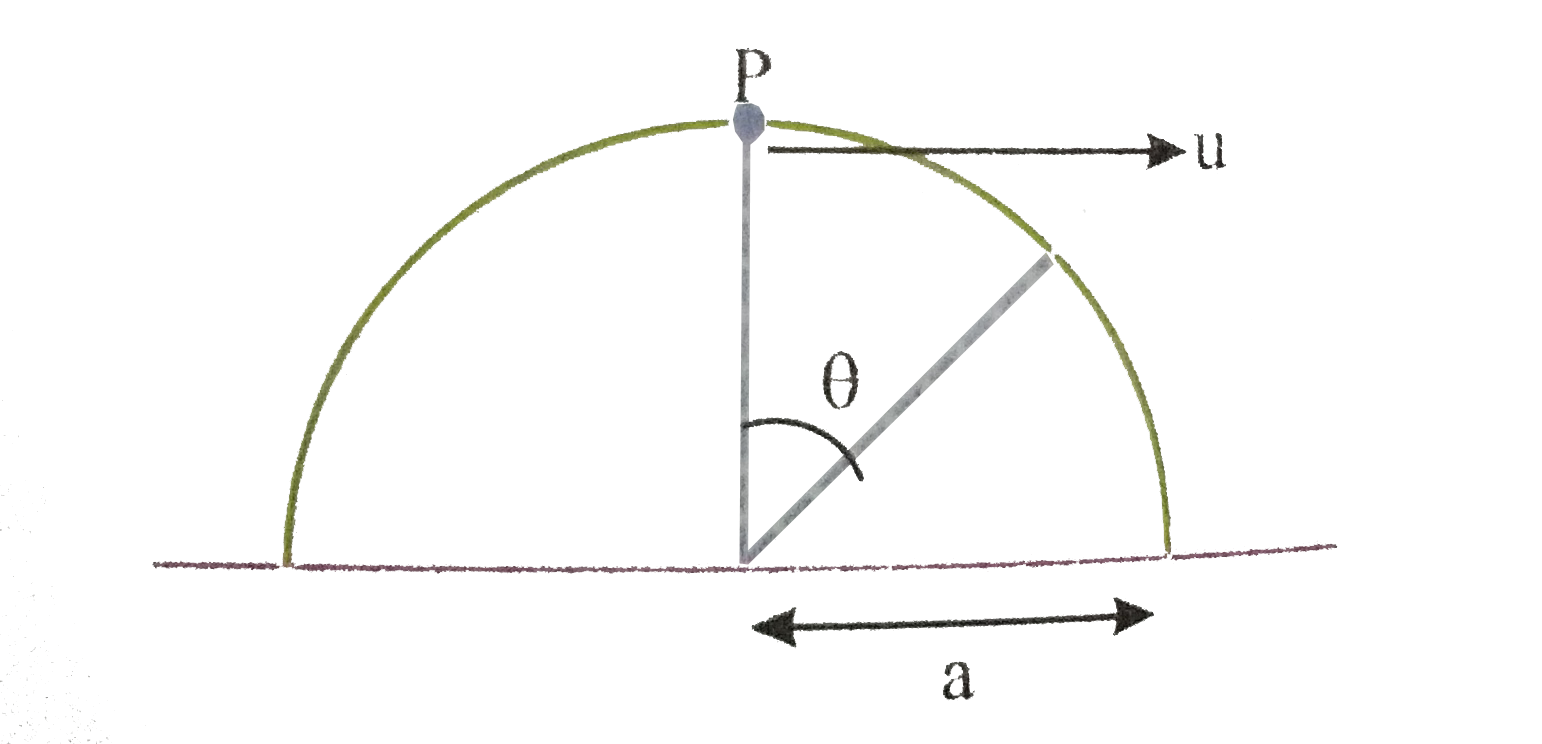 .
.
If the particle leaves the sphere, when it has fallen vertically by a distance of a4mu=√ga2.
If the particle leaves the sphere at angle θ (fig) where cosθ=√32, then u=√ag3
If u=0 and the particle just slides down the hemispherical surface, it will leave the surface when cosθ=23.
The minimum value of u, for the object to leave the sphere without sliding over the surface is √ag.
The correct Answer is:A, C, D
Applying conservation of total energy
12mu2+mga(1−cosθ)=12mv2
mgcosθ−N=mv2a
for particle to lose contact N=0
v2=agcosθ,u2+ga(2−3cosθ)=0.
Topper's Solved these Questions
- BOOK - NARAYNACHAPTER - WORK POWER AND ENERGYEXERCISE - Level-VI (Comprehension)20videos
WORK POWER AND ENERGY
- BOOK - NARAYNACHAPTER - WORK POWER AND ENERGYEXERCISE - Level-VI (Integer)12videos
WORK POWER AND ENERGY
- BOOK - NARAYNACHAPTER - WORK POWER AND ENERGYEXERCISE - Level-VI (Single Answer)31videos
WORK POWER AND ENERGY
- BOOK - NARAYNACHAPTER - WORK , ENERGY & POWER EXERCISE - EXERCISE IV43videos
WORK , ENERGY & POWER
Similar Questions
A particle of mass m is released from the top of a smooth hemisphere of radius R with the horizontal speed μ. Calculate the angle with verticle where it loses contact with the hemisphere.
View SolutionA particle rests on the top of a smooth hemisphere of radius r. It is imparted a horizontal velocity of √ηgr. Find the angle made by the radius vector joining the particle with the vertical at the instant the particle losses contact with the sphere.
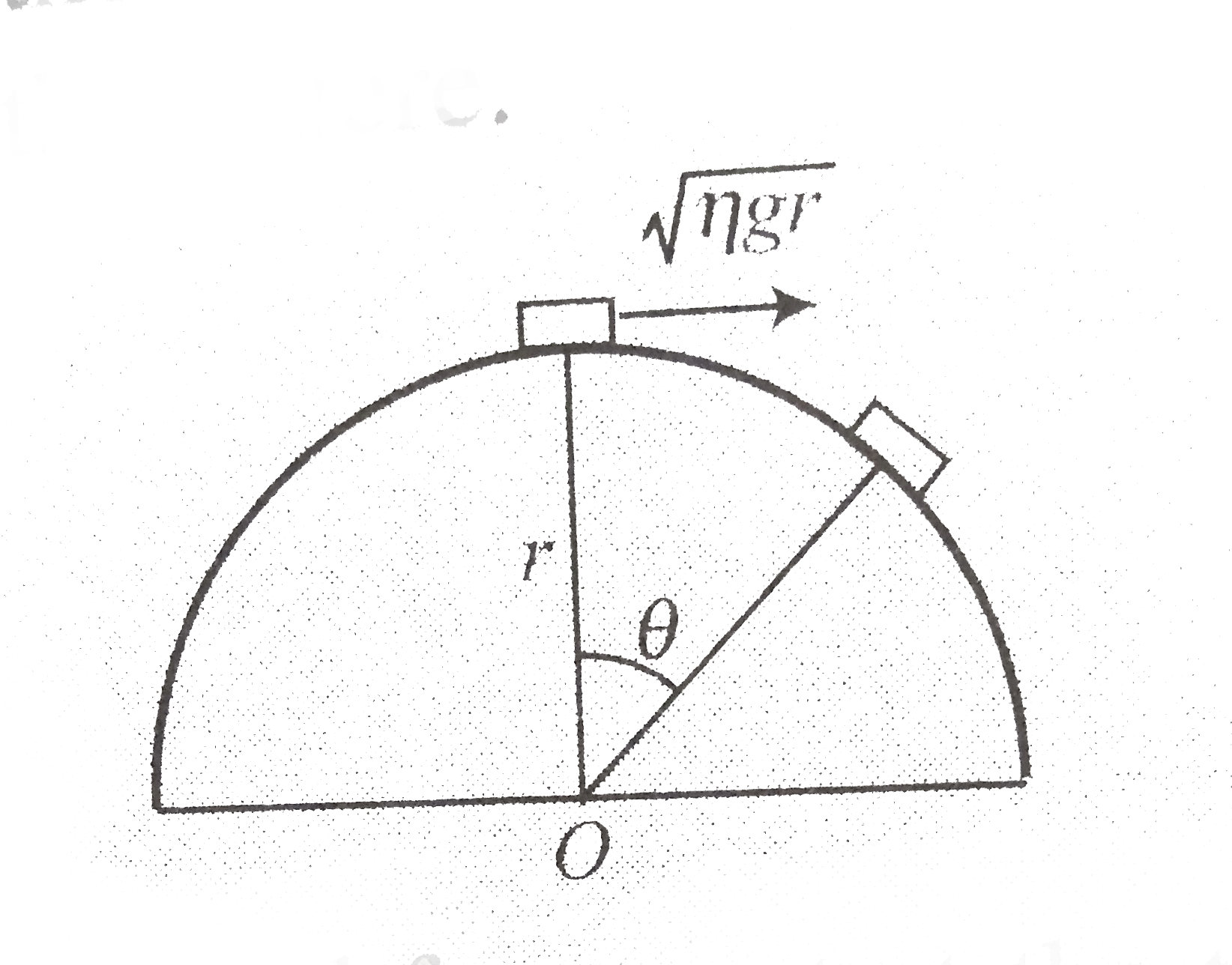 View Solution
View Solution
Knowledge Check
- Question 1 - Select One or More
A particle of mass m is kept at the top of a smooth fixed sphere. It is given a horizontal velocity v then:
Ait will start moving along a circular path if v<√gRBit will start moving along a circular path if v>√gRCit will start moving along a parabolic path if v<√gRDit will start moving along a parabolic path if v>√gR - Question 2 - Select One or More
A particle initially at rest on a smooth horizontal surface, is acted on by a constant horizontal force at time t=0 then if W= work, done t=time and v=speed of the particle, the nearly correct graph (s) is //are
A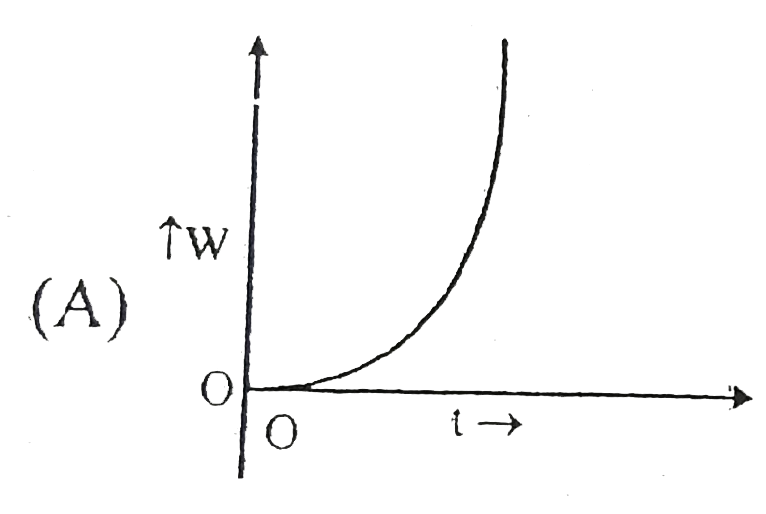 B
B C
C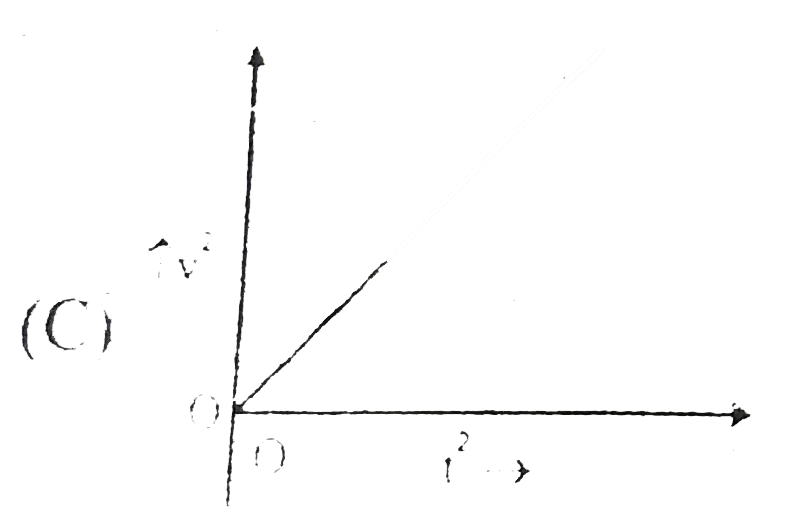 D
D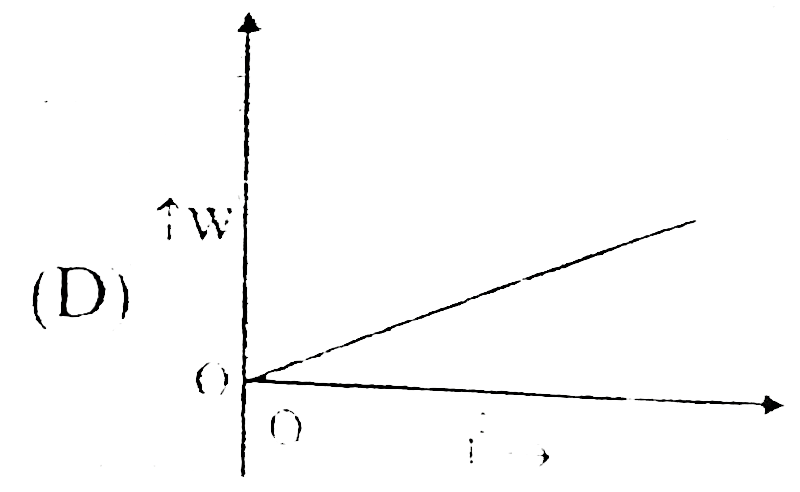
- Question 3 - Select One or More
A particle of maas m is attched to a light string of length l, the other end of which is fixed. Initially the string is kept horizontal and the particle is given an upwrd velocity v. The particle is just able to complete a circle
AThe string becomes slack when the partice reaches its highest pointBThe velocity of the particle becomes zero at the highest point.CThe kinetic energy of the ball in initial position was 12mv2=mgDThe particle again passes through the initial position.
A body kept on a smooth horizontal surface is pulled by a constant horizontal force applied at the top point of the body. If the body rolls purely on the surface, its shape can be-
View SolutionA particle at rest is constrained to move on a smooth horizontal surface. Another identical particle hits the stationary particle with a velocity v at an angle θ=60∘ with horizontal. If the particles move together, the velocity of the combination just after the impact is equal to
View SolutionA particle at rest is constrained to move on a smooth horizontal surface. Another identical particle hits the fractional particle with a velocity v at an angle θ=60∘ with horizontal. If the particles move together, the velocity of the combination just after impact is equal to
View SolutionA particle of mass m initially at rest starts moving from point A on the surface of a fixed smooth hemisphere of radius r as shown. The particle looses its contact with hemisphere at point B.C is centre of the hemisphere. The equation relating θ and θ' is
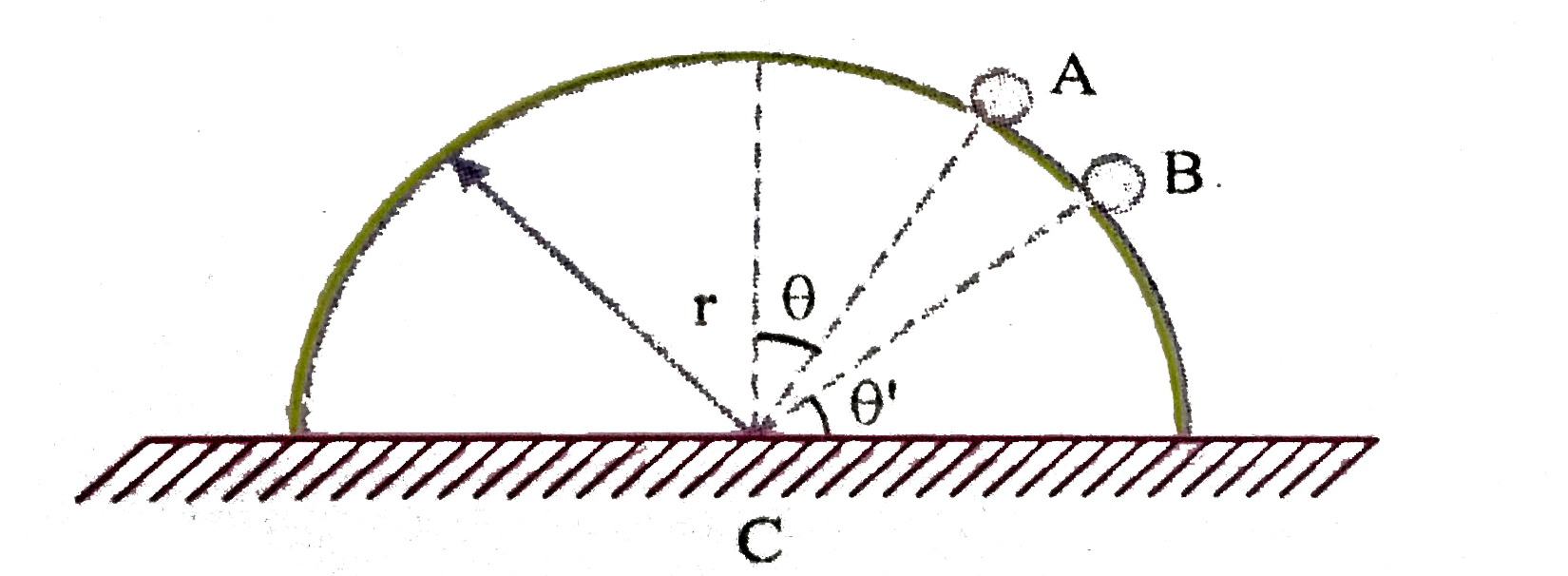 .View Solution
.View SolutionA particle of mass m is initially situated at point P inside a hemispherical surface of radius r as shown in the figure. A horizontal acceleration of magnitude ao is suddenly produced acceleration on the particle in the horizontal direction. If gravitational acceleration is neglected, then time taken by the particle to touch the sphere again is
 View Solution
View Solution

